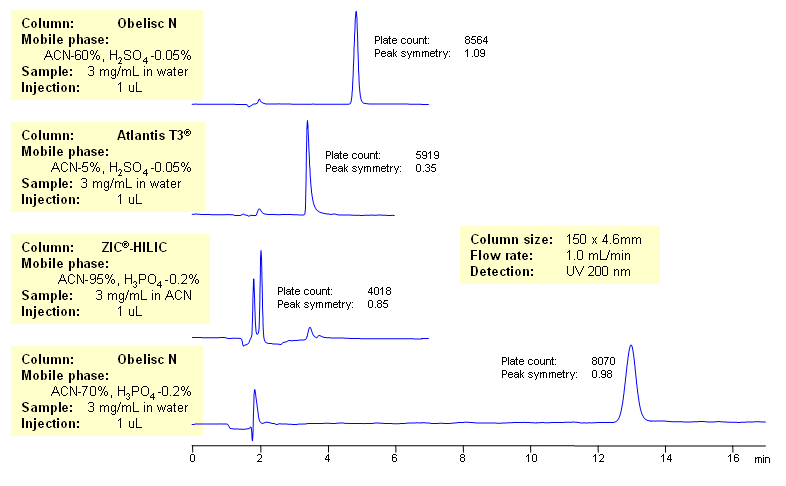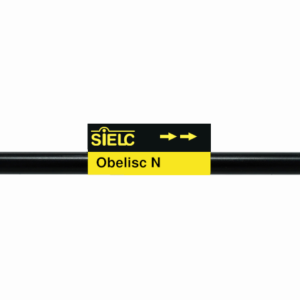
Dual functionality of Obelisc N column allows to retain and provide efficient peaks of strong carboxylic acids such as TFA. Simple UV quantitation and identification method became possible due to the unique properties of this stationary phase. In case of an RP separation poor retention and peak symmetry was obtained at a very low concentration of ACN. Sulfuric acid was used to suppress ionization of TFA to increase the hydrophobicity. In case of a typical HILIC column the phosphoric acid was used to increase ionization to make TFA more polar to enhance polar retention. The types of columns that do not have the mixed mode nature of Obelisc N can’t provide significant retention and efficiency.
Application Column
Obelisc N
SIELC has developed the Obelisc™ columns, which are mixed-mode and utilize Liquid Separation Cell technology (LiSC™). These cost-effective columns are the first of their kind to be commercially available and can replace multiple HPLC columns, including reversed-phase (RP), AQ-type reversed-phase, polar-embedded group RP columns, normal-phase, cation-exchange, anion-exchange, ion-exclusion, and HILIC (Hydrophilic Interaction Liquid Chromatography) columns. By controlling just three orthogonal method parameters - buffer concentration, buffer pH, and organic modifier concentration - users can adjust the column properties with pinpoint precision to separate complex mixtures.
Select options




